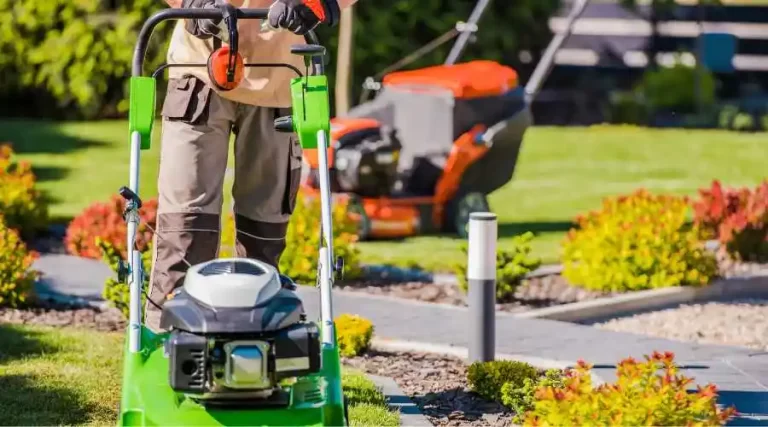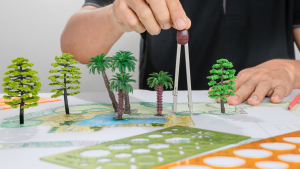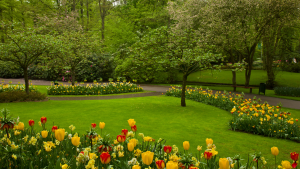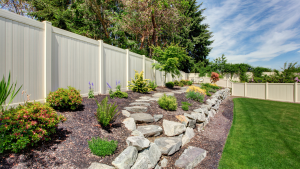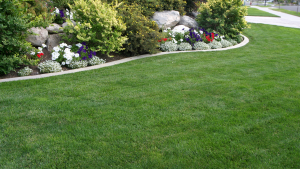The most vital information you’ll ever learn about your lawn and garden!
You may be thinking, “Wow, what a dramatic title.” In my 20+ years in the green sector, individuals’ most frequent errors in caring for their lawns and landscapes are due to poor watering and mowing/pruning. Let’s talk about irrigation today.
I mention improperly because many people believe that the main issue with watering is that they need to water sufficiently. In reality, I see much more problems caused by over-watering than under-watering. Drought stress occurs when plants are not saturated, and plants that are vulnerable may die under severe situations. This depends on the plant, and you should inventory your lawn and landscaping to determine which plants are more susceptible than others. On another page, I’ll start a list of plants that, in my experience, will only survive the summer with watering.
Once you’ve discovered which plants are vulnerable, you may start determining which parts of your yard need irrigation merely to live. However, as previously said, I notice much more issues with over-watering than under-watering. In reality, several problems caused by a lack of water in the summer may have been caused by an excess of water in the spring. Isn’t it perplexing? So persevere, and you will become a watering master!
Overwatering causes mostly illness problems. Grey Leaf Spot Disease and Brown Patch (Large Patch) Disease are the most prevalent diseases we notice in lawns. Root Rot is significantly more widespread in our landscapes than any other issue with plants that I observe. Let us begin with the grass.
In our region, grass watering is optional for most of the year. That’s correct; no watering is needed. Temperatures are reasonable from November to May, and we generally get enough rain to maintain our lawns in excellent condition. So, from May to October, our lawns need more watering. If we have regular showers, you may not even need to water the grass during this period, but, likely, we will only go through the summer after experiencing a few weeks of dryness in our region. So, how much is too much? The solution is contingent. It takes some thinking to get it right. So, to begin, if you know nothing else, the rule of thumb is 1″ of watering every week, up to 2-3 times per week in excessive heat and drought. Set an empty tuna can on the grass and time how long it takes to fill it to see how long the sprinkler has to run to obtain 1″ of water. So why should you know anything else? The following are the additional elements that influence how much watering your grass need—a type of soil (sandy, loam, clay). Clay soils or sandy soils predominate in our region. Some lawns feature both, particularly in recent development locations where the lots were built with river sand. The grass may be sandy near the home and clay elsewhere.
The next consideration is the amount of sunshine each part of the grass gets. Sunny regions of the grass need more watering than shaded ones. Some gloomy places may even live without much water. As a result of the additional moisture and greater humidity, illness issues are more common in shaded areas.
Once you’ve decided which plants need more watering than others (often those that do and those that don’t are right next to one other in the landscape), the next step is to look at the depth at which your plants are planted. The most frequent issue I notice with landscape plants is that they are planted too deeply in the soil and so suffocate. Watering should be done with particular caution for any plants planted towards the crown of the plant (the point where the plant starts to branch out from the trunk), and these plants should be dug out and replaced at the correct depth in the late autumn to early winter. Take note of any low-lying parts of the landscaping beds. Water settling in the bed around a plant will cause issues that must be addressed.
Determine your soil type now that all your plants are at the correct depth. You should inspect the soil surrounding the plant and try to discover what the earth is like deep below the plant, where the roots will develop. As previously said, clay is relatively frequent in our region. Even when there is an excellent landscape combination in the bedding regions, clay is often underneath. If you’ve ever left any of this clay out in the sun, you’ll notice that it hardens and holds water. If there is clay under the surface, it is similar to planting in clay pots. Excessive watering will be retained in the soil and smother the root system, and as plants develop, if they cannot push roots through the clay, they may outgrow the capabilities of their root structure to support their growth. This is why a giant plant that has been planted often over a long period may suddenly begin to decrease.
How to tell if your plant has root rot! The first indicator of root rot is when a part, but not all, of the plant dies suddenly. Typically, this is a stem or an entire branch or trunk of the plant. This condition often begins in the spring but manifests in the hot, dry summer months. This is because the plant could live on the root structure that is still intact until the circumstances got challenging. When the correct circumstances arise, the plant striving to live stops transmitting water and nutrients to certain parts of the plant. The plant is attempting to live!
You can see why this isn’t as simple as it seems at first glance. Here are more irrigation guidelines: When to water; early morning is best. Why? The goal is to water the plant’s root system rather than its leaves and branches. Watering in the morning permits the plant to dry out over the day. Plants that remain moist overnight incur disease and pest issues. I like to water landscaping plants using a “soaker” hose when feasible. This hydrates the root system and not the whole plant. Watering the plant over the top in the middle of the day might produce a burn. Droplets of water function like magnifying glasses, allowing sunlight to sear the leaves or the tips of the leaves where water gathers.
Now you’re a watering expert! You are now free to roam the grass! Contact your lawn or landscaping specialist or make an appointment for further information.

